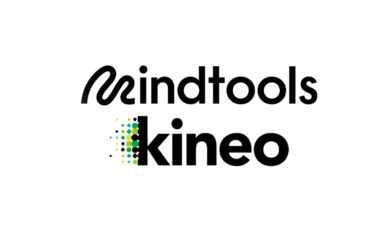“The difference between real life and a story is that life has significance, while a story must have meaning.”
― Vera Nazarian, Russian-American writer
I’m sure many of you enjoy watching a good movie. I do too. But isn’t it disappointing to leave the theater feeling that the story didn’t live up to your expectations? The cinematography can be beautiful, and the actors outstanding, but if the story falls short, the movie does, too.
Use Your Raw Materials
A few months ago, I suffered a different sort of disappointment with a story. And it happened at a talk given by someone who describes himself as a strong presenter, so I’d been expecting great things!
He started by giving us an outline of his presentation. He also made much of the fact that he’d be telling us an exciting story.
His presentation wasn’t exactly riveting, but I looked forward to the story, thinking that it would make up for the lack of depth in the rest of his talk.
Eventually, the moment for the much-anticipated story arrived.
But what a massive disappointment is was! In fact, it wasn’t a story at all. He simply told us about the differences between two cities, and the difficulties he’d encountered living there.
His “story” lacked background and context, so it ended up being nothing more than a collection of key points. There was no action, the ending was flat and unsatisfying, and the moral of the story was nowhere to be seen.
Reflecting on it later, I realized that there’d been plenty of potential here for an interesting story. The presenter didn’t lack content. He just failed to do anything with his raw materials.
Make Your Story Stick
A good business story is memorable. You won’t recall every detail, but there’s a good chance you’ll remember what you learned from it.
So, what elevates a collection of words and ideas into a story, and how do you make it stick?
A story needs context. Consider this sentence: “Jane ran down the street, looking left and right.” If you were telling a story about Jane training for a marathon, she’d likely be looking out for oncoming traffic. However, if the setting was a desolate area, with shady characters standing on street corners, Jane might instead be running away from someone, desperately looking left and right to find help.
Humans are meaning-making beings, and context gives meaning to actions. So…
A good business story uses actions, to show how events unfold – and to engage us emotionally. It’s about more than just a story line. People’s actions reveal their decisions, their values, and their internal battles. We feel emotions as a result of what the characters in a story do. And it’s this emotional connection that lets us make meaning of the story as a whole.
All actions have consequences, and consequences help us to see actions from a different perspective.
Consequences reveal the “lesson.” What was the result of the characters’ actions? Did they make the right choices? What lessons can we learn from their decisions?
Without this kind of conclusion, we may very well ask, “What was the point of the story?”
Don’t bore your audience with unnecessary details. Take your listeners on a journey, keep it relevant, engage their senses – but leave them with food for thought.
Sometimes, the details you put in are less important than the ones you leave out!
Using Storytelling as a Workplace Tool
In last Friday’s #MTtalk tweet chat, we talked about making the most of storytelling at work. Here are the questions we asked, and some of the responses we got from members of the Mind Tools community worldwide. Feel free to add your own ideas in the Comments section, too!
Q1. What do we mean by “stories,” and what is their role in society?
@MaryEllenGrom Stories are the DNA of society, culture, life. They bring reality to the forefront and create a worthy proof of concept.
@Midgie_MT Stories are the recounting of things that have happened in the past to share experience, strength and hope. By doing so, it helps people to connect with each other and to understand things better.
Q2. Why can storytelling be so compelling?
@lg217 Storytelling can get so emotional to those who read it. You will be surprised how much emotion can communicate with you. It could make you happy and sad and angry. It could also motivate you to do something about it. That is why it is so compelling.
@DrTonyKainth We live our lives in stories. Stories we tell about ourselves, others, the worlds we inhabit. We told stories before we could write them down, so they’re a part of what makes us human.
Q3. What elements make an effective story?
@kineretk We connect to what we can “see” and run the “movie” of the story inside our heads, so the details are important. Harry Potter comes to mind!
@MicheleDD_MT Context – where and when. Who – character(s)… Establish the goal – what do you want to accomplish? Introduce the obstacles/challenges. Describe the action(s) taken and the result.
Q4. What role do stories play in the workplace?
@PG_pmp Stories plays a huge role in conveying the right message, motivating people and helping them learn, and identifying the gaps to work on in areas of improvement.
@JusChas Stories play a role in market influence. Commercials are the most powerful stories when trying to sell.
Q5. When might storytelling NOT be helpful?
@MLLNNLmotivator The only instance I can think of is if you’re directly replying to a consumer question or concern.
@SanabriaJav Any time an organization is trying to capitalize on a trending issue they risk coming across as opportunists.
Q6. What’s the most impactful story you’ve heard at work, and why?
@carriemaslen I like hearing stories about overcoming challenges, especially if there are strategies I can adopt.
@PIPability Stories about people overcoming challenges. Stories about success. Stories about people making a positive difference. Stories about ordinary people doing extraordinary things.
Q7. What impact does YOUR storytelling have on others?
@TheCraigKaye Creates environments for Socratic learning, telling a story which gives people theories and best practice which they can apply to their own working situation.
@Mphete_Kwetli They learn about the realities of my tribe and of the life black people live throughout their lives.
Q8. Do you plan/rehearse your stories, or think of them in the moment? And what are the pros and cons of each approach?
@MarkC_Avgi If I am presenting, then the story is well-rehearsed. If circumstances at a certain time give rise to a story that relates, they are entirely impromptu, but may have been told before.
@Singh_Vandana Pros – helps in managing timelines, and cons – becomes repetitive for self. Pros – spontaneous stories are very inspiring, sound convincing and authentic.
Q9. Are the stories you choose “real life” or imaginary – and why?
@ThiruHR I use personal stories to illustrate the impact of change.
@kineretk Need to be true to be authentic and believable, otherwise no integrity, doesn’t have same impact.
Q10. In what ways can storytelling help you and your team to be more effective?
@sittingpretty61 Storytelling embraces your group and team to include them for key communication which is timely, socially relevant, and invites further application of key team messages.
@Yolande_MT Stories can help you connect the dots, make sense and make meaning of what’s happening right now.
You can read the full collection of tweets here.
Coming Up
When stories about poor service go viral, they can do huge damage to a company’s reputation. Fortunately, many stories about exceptional service go viral, too!
In our next #MTtalk tweet chat, we’ll be talking about people who seek to serve – and do it with passion! In preparation, we’d like to know why we seem to love stories about great service so much. Please share your views in our Twitter poll.
Resources
Meanwhile, here are some resources relating to the topic we discussed this time:
8 Ways to Strengthen Your Team With Positive Narratives
How to Achieve Business Success: Inspirational Stories
5 Ways to Avoid Death by PowerPoint Presentation
How to Be a More Engaging Speaker
Deal and Kennedy’s Cultural Model
User Stories in Agile Project Management





Comments
Keshab Simkhada says
6 years agoYolande, Very interesting post! Personally, I use this technique when I am explaining difficult or an interesting scenario to my folks. One quick question, how do you know when your folks have had enough of your storytelling? Cheers, Keshab
Midgie Thompson says
6 years agoGreat to hear Keshab that you use storytelling to help explain things. When I use stories, I pick one or two to make my point rather than numerous ones. I also look for clues, such as non-verbal body language, or ask them directly, whether they have got the point I was trying to make.
Yolande Conradie says
6 years agoKeshab, if you're "tuned in" to your audience, regardless of who they are, you'll pick up the signs quite quickly. They'll shift around, look bored, get busy with other things, stare into space, etc. If they do that, I know it's time to change tack.